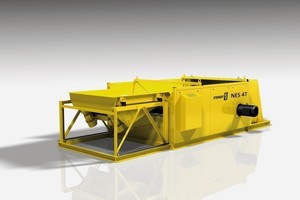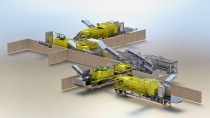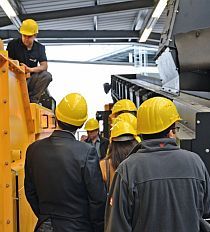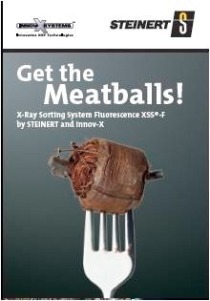STEINERT - More profitability in fine fractions
After optimization of the rotational speed, the STEINERT NES 4T (non-ferrous metal separator) now achieves higher output rates when separating non-ferrous metals from fine fractions. Operating at speeds of up to 4000 rpm and a field frequency up to 1.27 kHz, the new STEINERT NES 4T (Fig.) is capable of increasing its extraction rate by 20 to 30 % compared with a non-ferrous metal separator operating at 2600 rpm. The result is, however, strongly dependent on the material involved. Depending on the grain size, the extraction rate increases with increasing speed and field frequency, up to a maximum value. This maximum is reached at a speed of 3500-4000 rpm. It is possible to significantly increase the extraction of non-ferrous metals from automotive shredder residue (ASR) as well as slag for particle sizes of 0-4 mm and 4-8 mm as recent installations have shown. This comes at no compromise to the quality of the non-ferrous product (ZORBA) which remains at highly sellable purity levels.
The STEINERT NES 4T provides the economic basis for every recycling system involving the extraction of non-ferrous metals. Thanks to its reliability and long service life, it ensures an optimal operating result over the long term. The STEINERT NES 4T is used for a wide range of applications including the separation of shredder material, refuse incineration slag or electronic scrap.
The new generation of the eddy current separator unites a faster-rotating pole drum with the proven quality obtained by the use of neodymium-iron-boron magnets to achieve optimum separation results. The result is a demonstrable increase in the extraction rates.
The rotating permanent magnet system in the head drum of a STEINERT NES 4T creates high-frequency alternating magnetic fields with a field frequency up to 1,27 kHz. These fields induce eddy currents in the non-ferrous metals present in the material. The non-ferrous metals, in turn, generate their own magnetic fields opposing the external magnetic field, and as a result are deflected out of the remaining material flow. Nowadays, all material flows are subject to increasing economic competition. The increased yield of non-ferrous metals means that technology such as the STEINERT NES 4T pays for itself after as little as 100 000 tonnes in slag applications.





